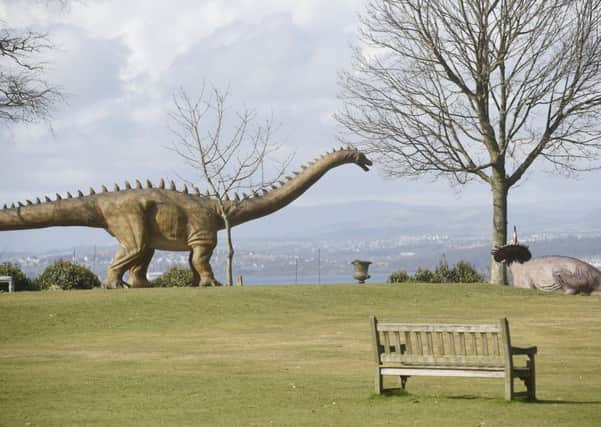Steve Cardownie: Dinosaur vandals are attacking a hidden Edinburgh gem


The news that dog patrols will operate in the hours of darkness to deter vandals from attempting to damage the exhibition’s 36 life-size, moving dinosaurs reflects an ongoing issue. Apparently up to 20 youths entered the gardens at night in an attempt to vandalise and push over the dinosaurs during their installation. What possesses some people that they can only derive some form of pleasure by ruining the enjoyment of others? Previous locations of the installations have also been attacked so it is not an issue that only affects Edinburgh, but is prevalent in other cities too. Hopefully the additional security, which includes a team of three Alsatians and two Japanese Akitas will do the trick but you could be forgiven for thinking that some of the youths involved could do with a swift kick up the Tyrannosaurus rex.
Lauriston Castle and its surrounding gardens are worth a visit on their own and I have held the view for some time now that this is indeed one of Edinburgh’s hidden gems. Some years ago, the council held a reception in the grounds for the city’s diplomatic corps and I was struck by the number of honorary counsuls, born and bred in Edinburgh, who said that they were unaware of its existence.
Advertisement
Hide AdAdvertisement
Hide AdIt is a late 16th century tower house which was extended in 1824 and boasts a collection of 18th century furniture, Derbyshire Blue John, carpets, tapestries, porcelain, clocks and decorative art. It stands in 30 acres of parkland and offers spectacular views across the Firth of Forth. In 1902 the castle was purchased by William Reid, who was a wealthy cabinet maker and he filled the house with a breath-taking collection of fine art and furniture. He and his wife died without heirs so they left the house to the nation on the condition that the collection would remain intact and it is now looked after by the city council. They had good reason to impose this condition as the collection includes over 80 examples of objects made from Blue John as well as Chinese porcelain and Delft ware from the Netherlands. French clocks, snuff boxes and ceramic needle cases are found throughout the house, delighting visitors on guided tours.
The grounds comprise of three croquet lawns and a Japanese garden given as a friendship gift from the prefecture of Kyoto, which has twinning links with Edinburgh. The main gardens were laid out in the 1840s for William Playfair and are surrounded by a ribbon of woods.
Open to the public, the gardens offer a fine place for picnics (dogs allowed) and a number of events are staged throughout the year for the entertainment of visitors. It is a pity that more of Edinburgh’s citizens have not made the effort to visit as, lying between Davidsons Mains and Silverknowes, it is readily accessible by public transport and is well worth taking the time to seek it out. Similarly I am sure that this splendid venue goes largely unnoticed by the majority of visitors to the city, which is a great pity as it could help draw tourists out from the city centre.
As summer approaches, it may provide a tranquil escape from everyday urban life. The gardens and the castle can offer a visitor experience that will last long in the memory and the city is immensely grateful to the Reids for their awe-inspiring gift.
Advertisement
Hide AdAdvertisement
Hide AdA million people take to Union Canal ever year – and so should you I recently took the opportunity to visit the Union Canal, which stretches from Edinburgh to Falkirk, and was appreciative of the work undertaken by Edinburgh City Council and its partners, Scottish Canals and Sustrans Scotland, in improving the towpath. The Edinburgh section boasts approximately a million users each year and is proving ever more popular. I strolled along the towpath one day when the morning weather was grand, allowing me to appreciate my surroundings to even greater effect.
The towpath provides a great source of recreation for walkers and cyclist alike and, as it is a canal towpath, it is obviously flat, ensuring that minimum exertion is required.
If you haven’t been lately (or at all) pay it a visit, I am confident that you will find it both surprising and rewarding.
